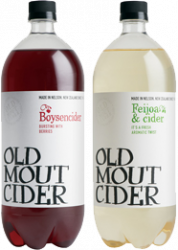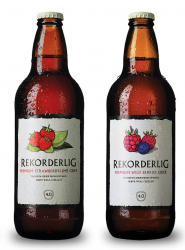Cider is so hot right now!
Cider is available in so many flavours now that it’s becoming one of the most diverse beverages of choice – perfect for the coming summer days.
It wasn’t so long ago that cider in New Zealand meant ?zzy, alcoholic apple juice either so sweet it made your teeth ache, or so eye-wateringly strong you weren’t always entirely sure your throat hadn’t melted after drinking it. And your ?avour choices were apple, or, for the adventurous, apple. But my, how far we’ve come. These days there’s a buffet of locally produced ciders to choose from and a generation of cider makers as experimental as craft beer brewers. Though cider has exploded on the New Zealand beverage scene only relatively recently, Europeans have been sipping cider as far back as the 9th century. It was even fermented in monasteries after the 1066 Norman conquest of England and sold to the public by the tonne.
The traditional cider apples used then are still around; small hard, ?brous and bitter they make for terrible eating but are full of ?avour in a cider. “There are thousands of different varieties [of cider apples and perry pears,] all with great names like Kingston Black, Dabinett, Fox Whelp and Sweet Coppin,” says Redwood Cellar Co cider maker Merophy Hyslop.
“They’re all generally inedible raw and are characterised into sweets, sharps, bittersweets and bittersharps. With the right blend from a cider maker, they produce ciders with great character.”
Times have changed though, and it’s not just those traditional varieties that are used. Cider is made in New Zealand with a whole range of apple varieties. Hyslop says most ciders here are made from culinary or dessert apples such as Braeburn, Pink Lady, Granny Smith and Paci?c Rose. Or when it comes to pear ciders: Taylors Gold, Beurre Bosc and Doyenne du Comice. All of which produce “elegant, fresh and fruity ciders”.
“It’s not the same drink it was 20 years ago. Forget the rough and ready styles available then. There’s now a huge variety to suit all palates, including many ciders blended with fruit.” Hyslop is currently spending her days re?ning Old Mout (rhymes with fruit), and developing new ?avours. So far the range includes Passionfruit & Cider, Boysencider, Feijoa & Cider, Cranberry & Cider, Pear Scrumpy, Scrumpy, and Classic Apple. With so much variety to choose from, where does a novice cider drinker start? Hyslop has some easy-to-follow advice: “I suggest tasting a wide variety of ciders. You will soon pick your preferred style. And always be open to new taste experiences, as the market is changing all the time.”
She’s not wrong. Other cider labels are constantly raiding the nation’s fruit bowl for new ideas. Rekorderlig has just added passionfruit to its existing stable of Orange- Ginger, Strawberry-Lime, Wild Berries, Apple-Blackcurrant, Mango-Raspberry, and, of course, Apple, and Pear. Monteith’s produces Crushed Apple, Crushed Pear, and Crushed Summer Berries. And for those who think of it as merely a fruitier alternative to beer, think again. Ciders of all varieties have a life well beyond just going solo, blending brilliantly with other spirits, mixers and fruit into cocktails.
They’re also great for matching with foods. The most straightforward way is to add fresh fruit to your glass – try fresh boysenberries with Old Mout’s Boysencider, for example. The next step is to match the cider with recipes the same base fruit. “Think apple and berry pie, poached pear with ginger, or feijoa and apple crumble. It just makes sense for these fruits and spices to be blended with cider.” Monteith’s, meanwhile, reckons its Crushed Apple Cider works well with sweet French crepes, strong blue cheese or nutty gouda, while its Crushed Pear Cider could go with ginger-based dishes, blue cheese or strong cheddar. And try pairing the Crushed Summer Berries with a smoked chicken salad, or a platter of fresh bread, cold meats, fruit chutney and mild cheddar.




